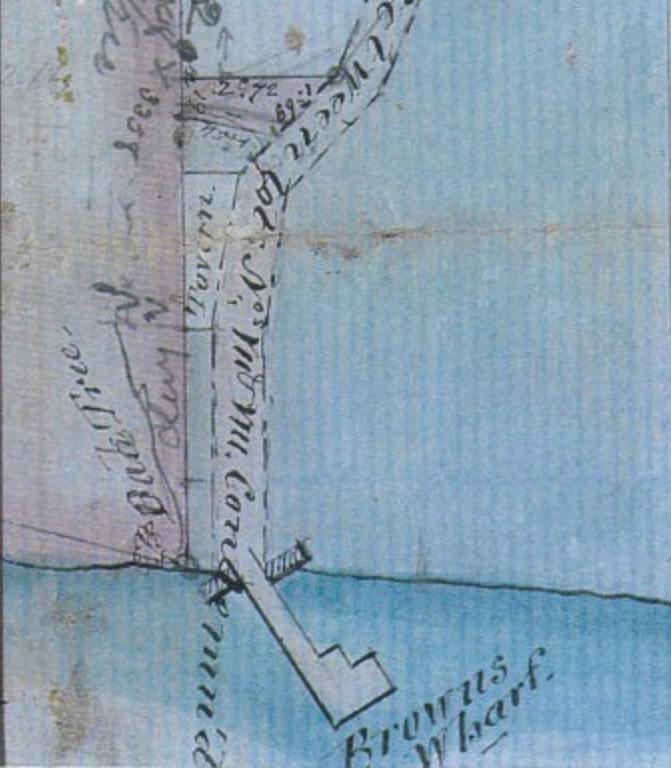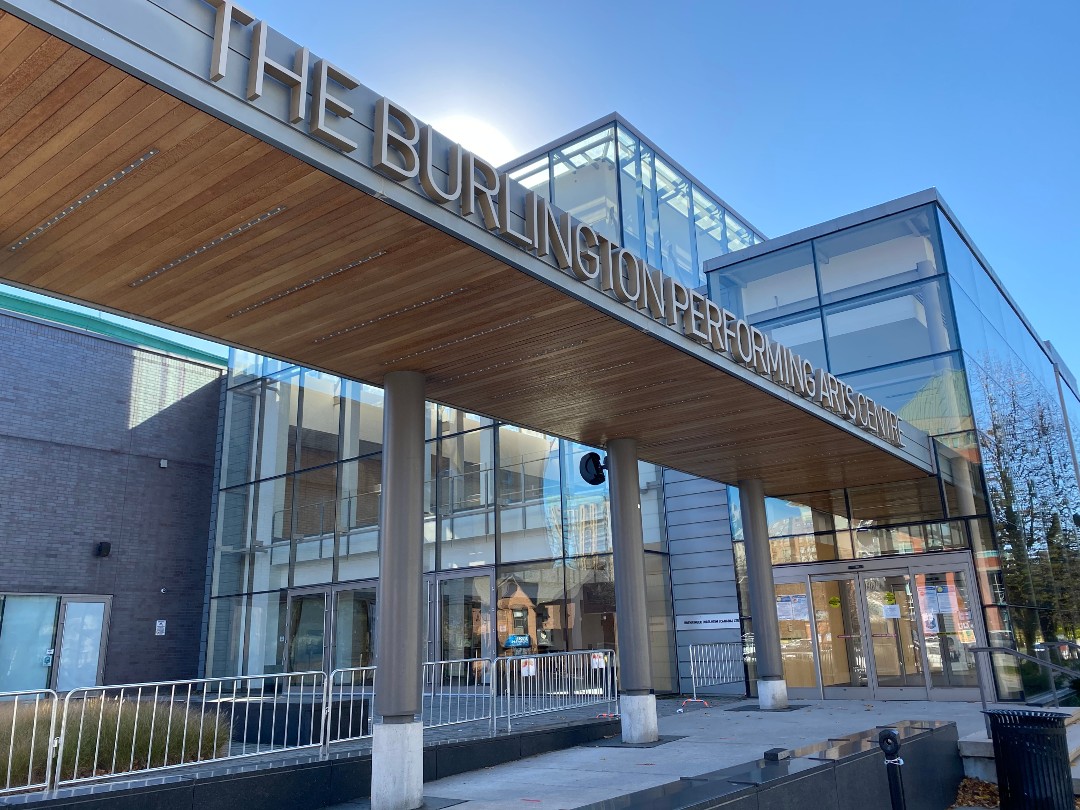The cities of Burlington and Hamilton continue to argue over the future of LaSalle Park, but regardless of how the negotiations end, if ever, the park, the marina, and the road leading to them are firmly embedded in Aldershot’s history. They are the legacy of one of our most influential citizens.
In the mid-1800s, Alexander Brown Jr., a shrewd businessman, built a wharf at the foot of what we now call LaSalle Park Road. Brown’s goal was to ship the wood from his family’s sawmill on the Grindstone Creek to his customers around Lake Ontario. It would become an important piece of Aldershot history.
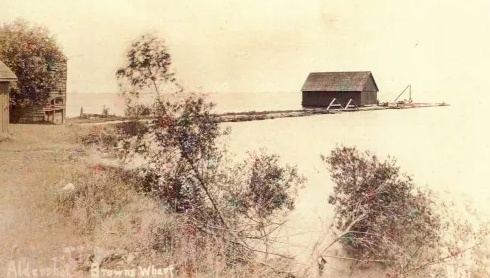
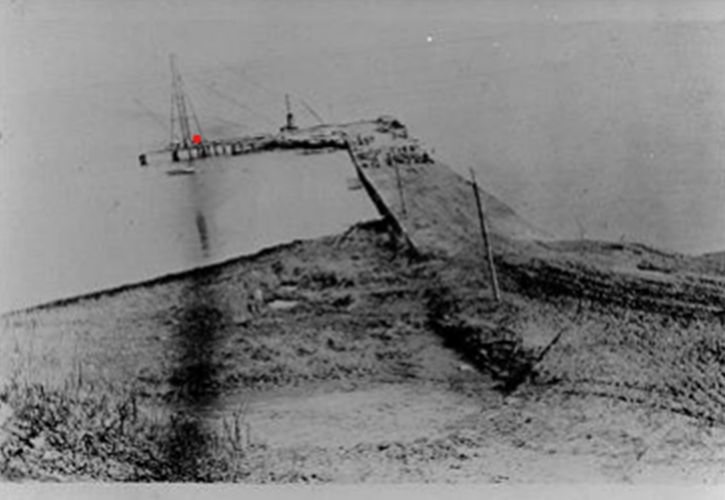
That wharf, known as Brown’s Wharf or Port Flamborough, would evolve into one of the leading shipping centres on the Great Lakes. By the 1860s, it was a major supplier of wood to fuel the engines of paddle wheel steamers. It also shipped grain, flour, aggregate material, woolen goods, and farm products such as the famous Aldershot sugar melons. It became strategically important and rivalled the nearby Bunton and Baxter’s Wharfs in Burlington.
Brown didn’t stop there. Since he and his wife Sarah owned much of the land in the area, he also built a toll road between the family sawmill and his wharf, making it easier to move his timber. The road was two-and-a-half miles long. It was the start of Waterdown Road at the location where we know it today. He called it the Waterdown and Port Flamborough Road.
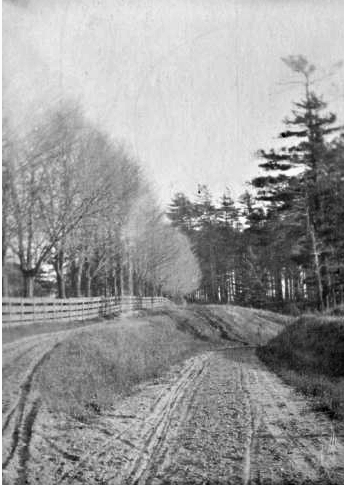
“The road leading to the wharf was a funnel from the prosperous industries of the Waterdown area as well as the rich farmlands of East Flamborough,” according to Marguerite Botting, writing in a Burlington Historical Society newsletter.
The wharf and new road were not just an economic success. They also helped stimulate the early development and social life of Aldershot. They led to the construction of a tavern beside the wharf in the area we now call Oaklands Park Court. The tavern, which was known as the Victoria Pleasure Grounds, also had rooms to rent.
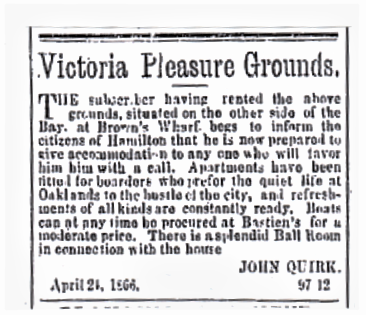
Inevitably, Brown’s new road to the wharf attracted services such as a blacksmith shop, shoemaker, general store, and post office on Plains Road at the intersection we now call Aldershot Corners (at Waterdown Rd., LaSalle Park Rd. and Plains Rd.).
Brown also owned the area above the wharf and built his two-storey family home in what is now LaSalle Park, where the pavilion sits today. He lived there until his death in 1880. The home was moved to North Shore Boulevard in 1917 and demolished in 1950.
Brown was not only a smart and successful businessman, he was a full player in the life of early Aldershot and Waterdown. He was a soldier, a builder, a justice of the peace, an alderman, a deputy reeve, and later a warden of East Flamborough. He eventually became the first postmaster in Aldershot.
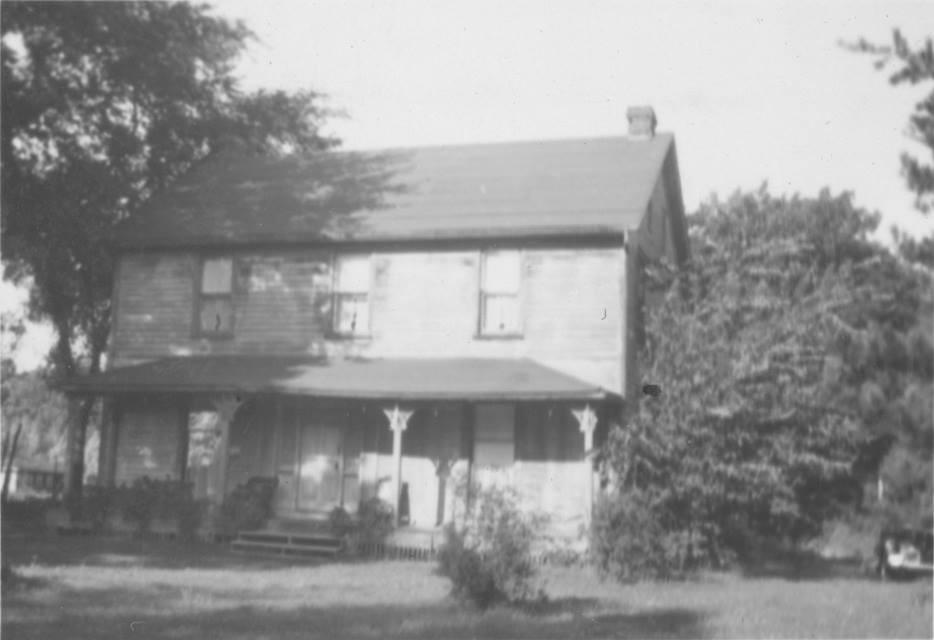
Brown’s house after it was moved out of LaSalle Park. 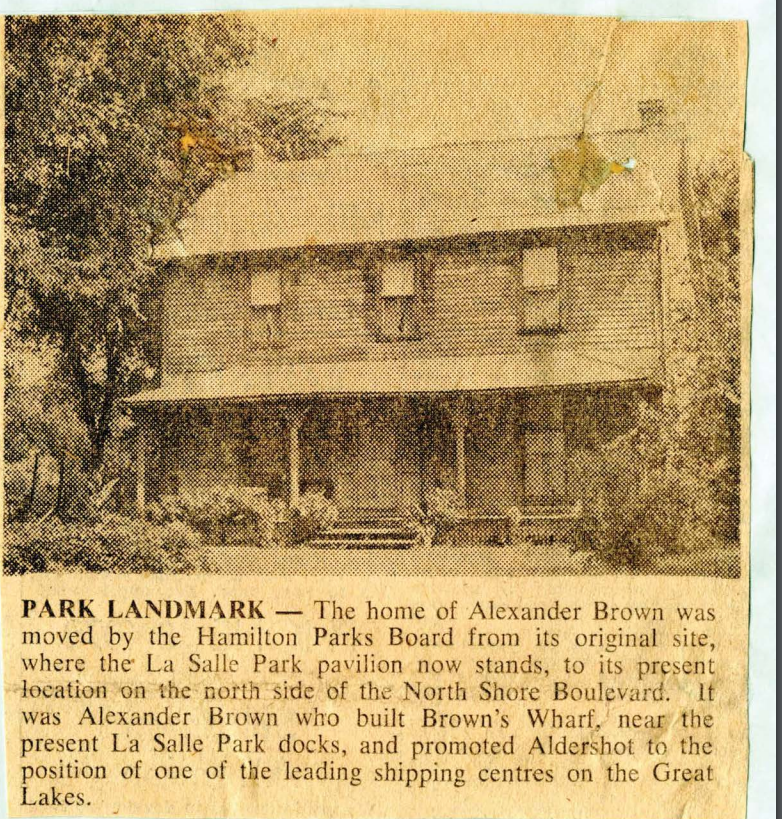
Brown may have been what today we would call a “mover and shaker,” but he wasn’t always successful. He ran for parliament, but lost.
The last large shipment from Brown’s Wharf was 15,000 to 20,000 barrels of apples in 1897, according to the records of the Aldershot Women’s Institute.
After Alexander died, his son ran the wharf until the 1900s. He sold it to the City of Hamilton in 1913 to create Wabasso Park, now LaSalle Park. After that, the wharf mainly served ferry boats from Hamilton to the park.
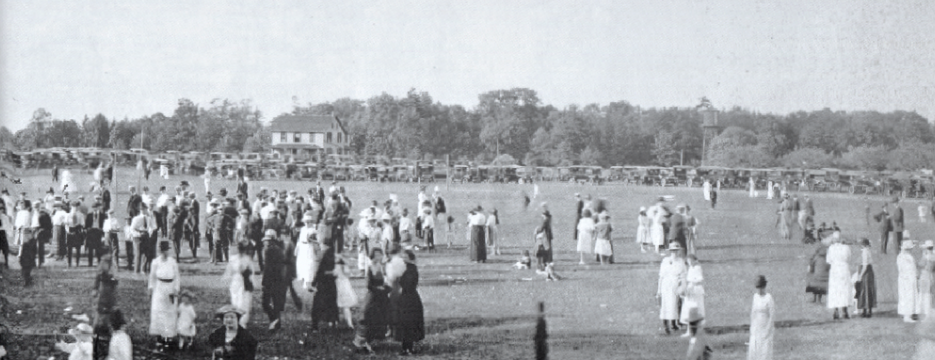
This article with prepared with the assistance of documentation provided by: the Burlington Historical Society, The Flamborough Archives, Pathway To Skyway: Revisited by Claire Machan, The Head-of-the-Lake Historical Society, Mr. Scott Forsyth, The Burlington Public Library, and records from the Aldershot Women’s Institute.


